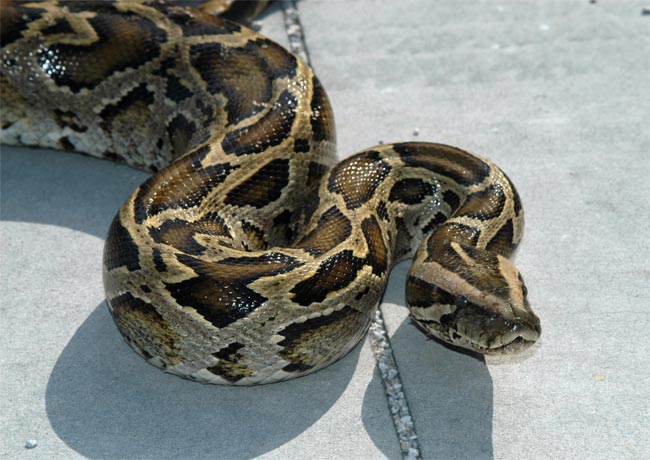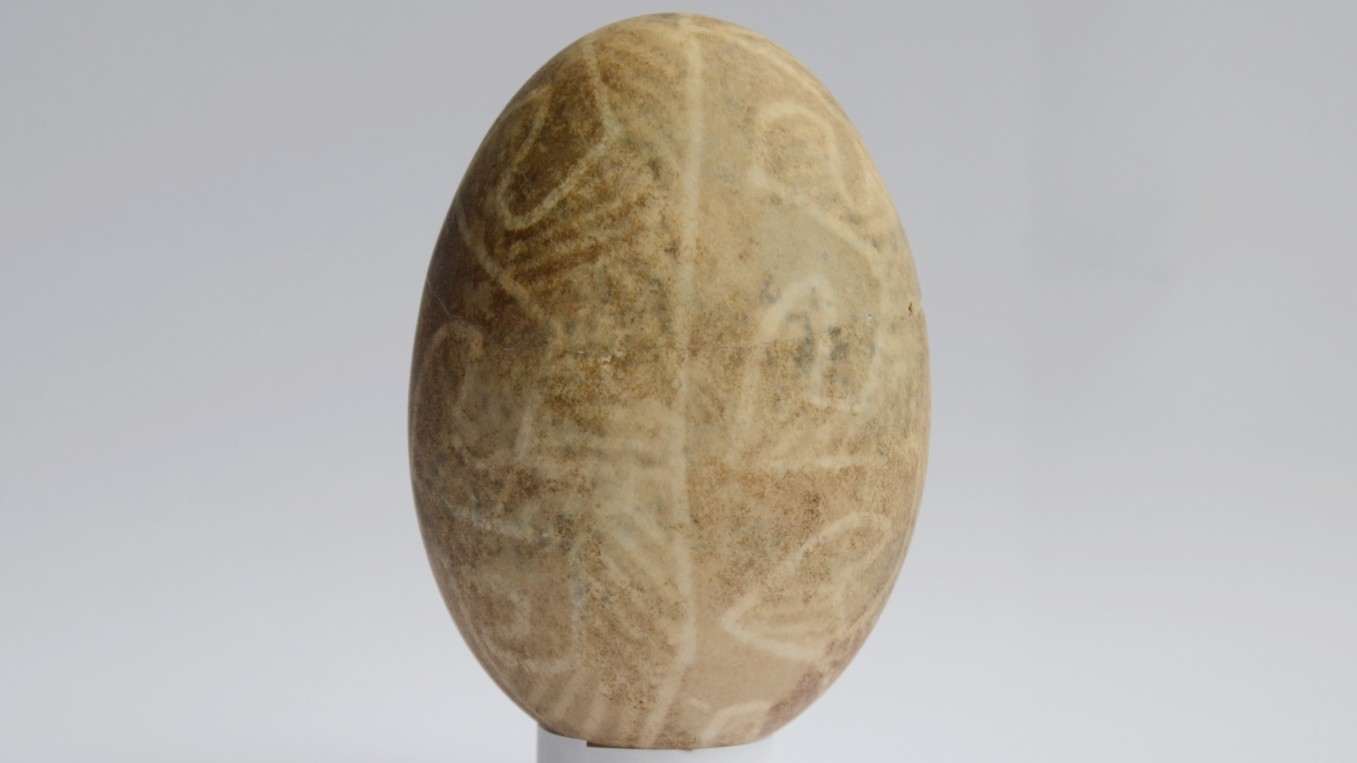Mercury Keeps Invasive Pythons Off the Menu

Southern Florida has a big problem on its hands — thousands of them, in fact. A burgeoning population of invasive Burmese pythons has been gobbling up native wildlife in and around the Everglades.
Now evidence is accumulating that the snakes, which can reach more than 20-feet (6 meters) long and weigh upwards of 200 pounds (90 kilograms), are contaminated with strikingly high levels of mercury, and managers are urging python hunters to think twice before eating their quarry.
Scientists are now trying to figure out how these predators became such sinks for toxic mercury, though it may just be a sign of the metal pollution in the Everglades where the snakes now live.
Python rodeo
A year ago scientists and managers were floating the idea of a "Python Rodeo" to encourage local hunters to help curtail the Burmese python problem. It sounded promising until someone pointed out that many of the Everglades' top predators have dangerously high mercury levels, so the pythons might too. If the hunters took python meat home for supper, they could be putting themselves and their families at risk.
Finding nothing in the literature about mercury in pythons, David Krabbenhoft, an environmental chemist with the U.S. Geological Survey, set out to test tissue samples from a collection of frozen python tails maintained by scientists at Everglades National Park.
Analyzing more than 50 samples, Krabbenhoft was stunned to find the highest mercury levels of any animal in the park —up to 3.5 parts per million. By comparison, the state of Florida considers fish containing more than 1.5 parts per million of mercury unsafe to eat. "We were very very surprised to see how high the levels were — much higher than fish or alligators," Krabbenhoft said.
Sign up for the Live Science daily newsletter now
Get the world’s most fascinating discoveries delivered straight to your inbox.
In fact, the mercury levels were up to five times higher than those of gators, which are the park's previous record setters as well as the pythons’ occasional prey. "Either they're eating a lot of alligator to get [levels] that high," said Krabbenhoft, or, more likely "pythons are very incapable of ridding themselves of methylmercury that they get exposed to in their diet." [Gruesome Images Reveal Python Devouring a Rat]
Intriguingly, the pythons exhibited none of the patterns animals usually do in their mercury levels. There were no obvious differences in contamination level based on the pythons' size, age, sex, or location—a puzzle that Krabbenhoft will attempt to solve by testing another 100 python tails this fall.
Mercurial snakes
The Everglades have extremely high levels of mercury contamination, owing in part to the area’s unusual atmospheric conditions, Krabbenhoft said. Transpiration by lush vegetation pumps enormous quantities of water into the atmosphere, prompting the formation of giant clouds during much of the year. These reach high into the atmosphere where a form of mercury lurks that is easy for the clouds to pick up and rain back down to earth.
Burmese pythons eat more than 35 species of mammals and birds in their newfound home, including threatened and endangered species. They are much bigger — and hungrier — than any of Florida's native snakes, which max out around 8 feet (2.4 meters) long. "They are having a huge impact on this ecosystem," said Krabbenhoft.
Being near the pinnacle of southern Florida's top predators makes Burmese pythons vulnerable to mercury contamination, since the chemical accumulates with each link in the food chain.
Python populations
No one knows how many Burmese pythons are on the lam in south Florida, but estimates put their numbers in the thousands, perhaps tens of thousands. The population is attributed to pet snakes that escaped or were let loose illegally by people who could no longer take care of them.
Ironically, in their native Southeast Asia, Burmese pythons are listed as "near threatened," in part because of the pet trade. And the United States is a major importer, having brought in an estimated 99,000 of the animals between 1996 and 2006. Burmese pythons aren't the only big invasive snakes on the loose in south Florida, either: African rock pythons and boa constrictors are also breeding there, and several other species have been observed in the wild.
Hunters have been enlisted on state land to help in a multipronged effort to control the pythons' spread. Florida state officials point out that the hides can be sold or fashioned into a pair of stylish boots. But they warn hunters away from eating the meat due to the mercury, and they aren’t planning to hold a Python Rodeo or to place a bounty on the invaders’ scaly heads.
Krabbenhoft reported on his work at the Greater Everglades Ecosystem Restoration Conference in July.
- 7 Shocking Snake Stories
- Image Gallery: Snakes of the World
- Top 10 Deadliest Animals










